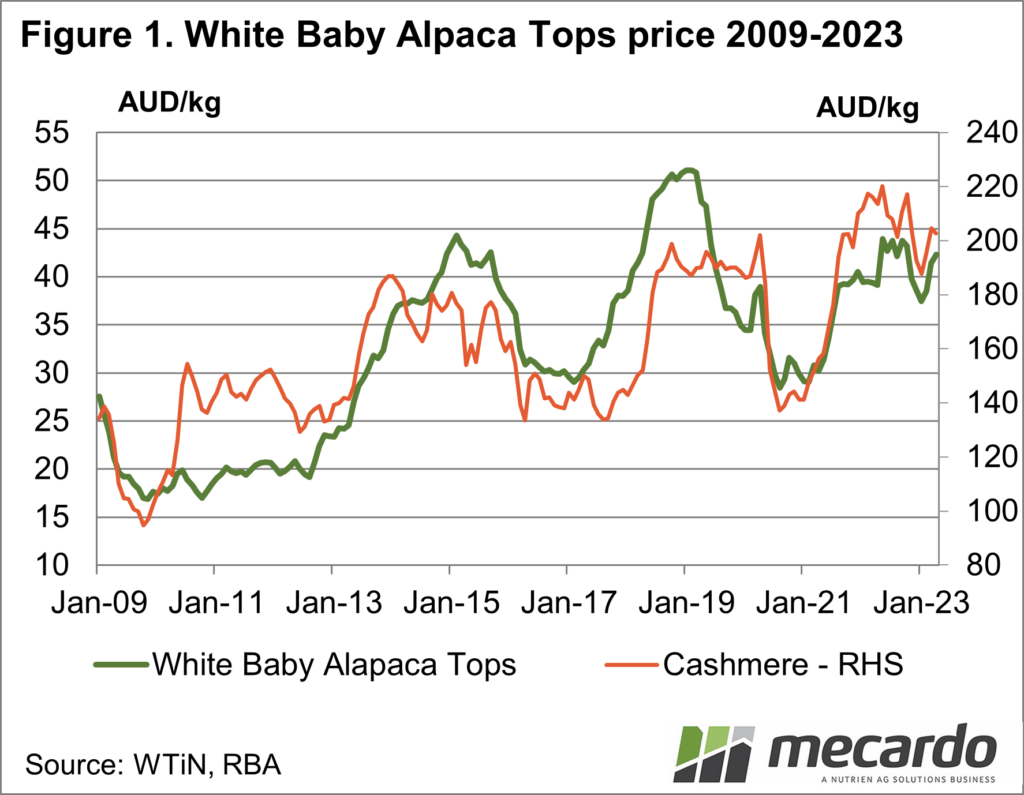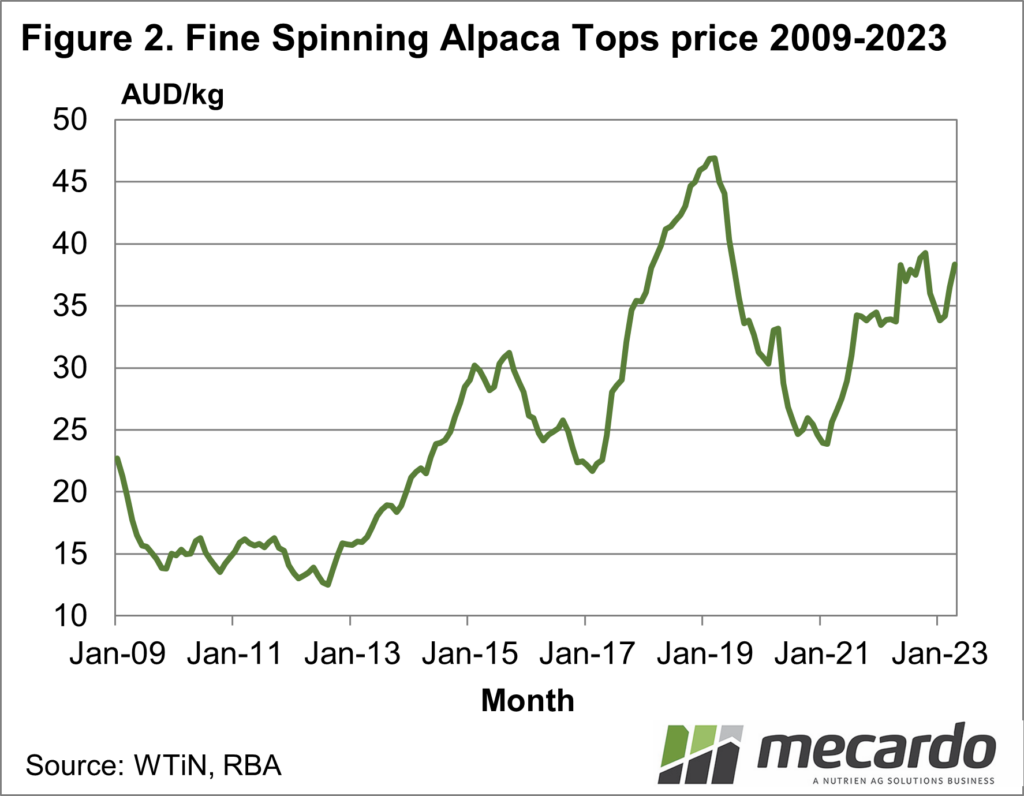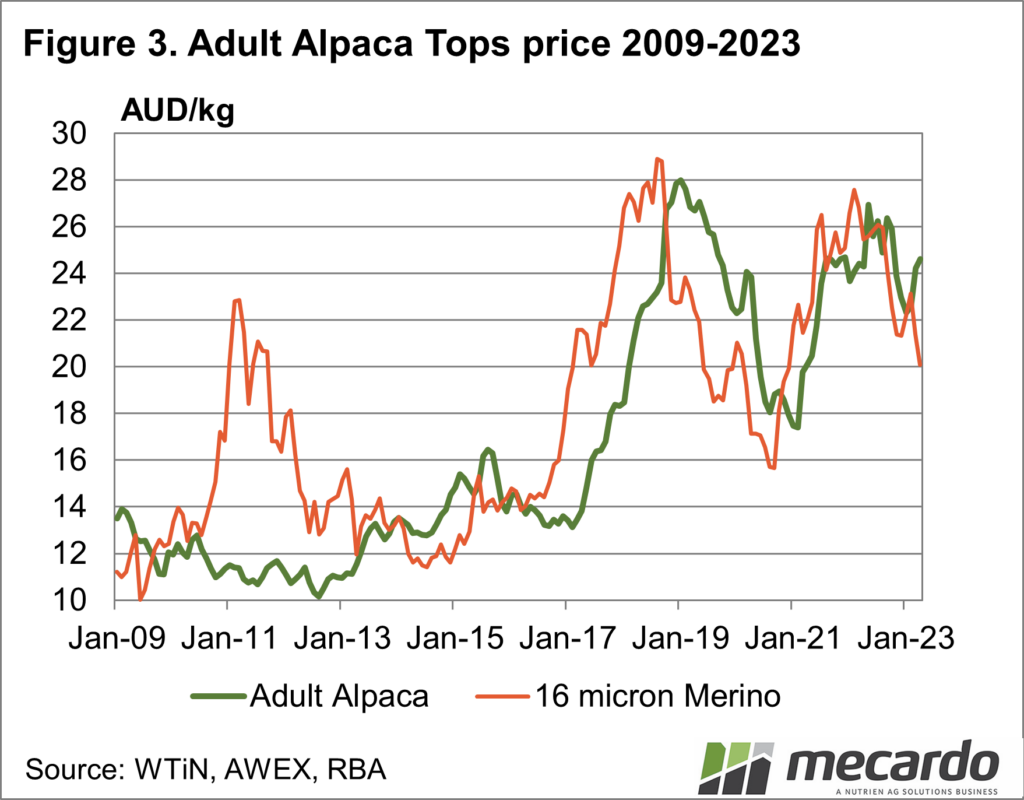An article last week claiming the Australian alpaca herd, at 400,000, was second in size only to the Peruvian herd prompted Mecardo to have another look at alpaca fibre prices. It has been three years since the last article on alpaca fibre prices, which given the reported herd numbers, is an oversight.
Like most of the minor animal fibres, reports of supply and prices are sketchy at best. Even wool struggles in places such as New Zealand for good, regular supply and price data. The world volume for alpaca fibre was around 6,000 greasy tonnes according to the International Wool Textile Organisation, (IWTO) in 2021. For comparison (all greasy) cashmere volumes were estimated at 26,000 tonnes, mohair at 4,000 tonnes and vicuña at 7 tonnes (the number seven is correct, if you want a high price per kg simply have a very small supply). Wool in total was estimated at two million tonnes greasy (around one million in clean terms), with Merino accounting for a little over a third of this volume. The alpaca price quotes used in this article come from World Textile information Network (WTiN) the descendent of the old Bradford Wool Report.
Figure 1 shows a price series (all in Australian dollar terms) for white baby alpaca tops (left-hand axis) from 2009 onwards along with a price series for cashmere (right-hand axis). The two series show a strong correlation in terms of cycles and trends, even if their price levels are quite different. The one period where alpaca prices show a variation from the cashmere price is in 2011, when cotton prices literally “went ballistic” dragging nearly the entire apparel fibre price complex higher.
Figure 2 shows a series for fine-spinning alpaca tops from 2009, in Australian dollar terms. The period of high prices in 2018 and early 2019 is similar to the cycle seen in wool. Prices can be seen to be falling through 2019 and then being depressed further in 2020 by the pandemic, with a subsequent recovery into 2022, before levelling off from mid-2022 onwards. The resemblance is closer to fine Merino price movements.
Figure 3 compares adult alpaca top prices with an average 16-micron merino (all-in) price series to tease out the relationship between alpaca and fine wool. A major difference between Figure 3 and Figure 1 is that in Figure 3 both series are on a common price scale. As in Figure 1, the relationship is a strong one except for the 2011 cycle, which the alpaca price series ignores completely. From 2013 onwards (the past decade) the two series have followed similar cycles, at very similar price levels.
What does it mean?
From a fibre price perspective, alpaca price levels have been at good levels since 2017-2018, with a brief dip in 2020-2021, much like fine merino wool. It seems that 16-micron merino wool can help as a guide to price levels for adult alpaca tops, although the 2011 cycle is a reminder that occasionally the prices of the two fibres will go separate ways.
Have any questions or comments?
Key Points
- During the past decade alpaca fibre prices have followed similar cycles and trends to cashmere and fine merino prices.
- The average 16-micron price has been strongly correlated with adult alpaca tops since 2013 and gives a reasonable idea of the likely value for this alpaca category.
- The 2011 cycle reminds us that correlations, in this case between fibres, do break down occasionally.
Click on figure to expand
Click on figure to expand
Click on figure to expand
Data sources: WTiN, RBA, AWEX, IWTO, ICS , Mecardo















